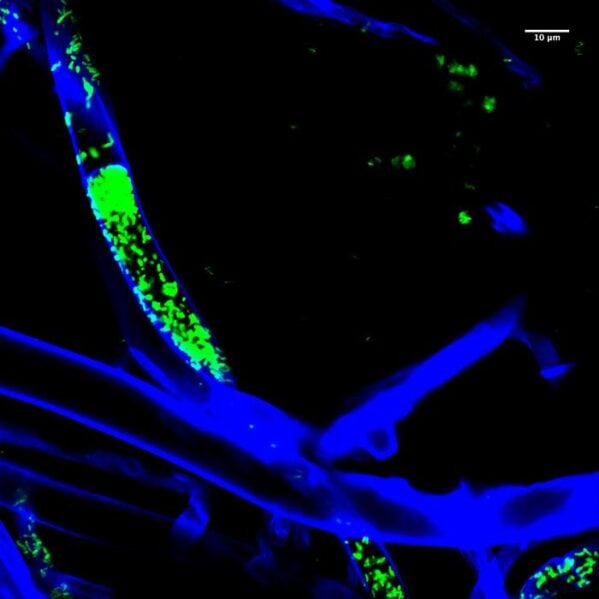In an eye-opening new study, scientists at the Leibniz Institute for Natural Product Research and Infection Biology in Jena have made a fascinating discovery about the delicate relationship between certain bacteria and fungi. This research casts a spotlight on the intricate world of microbial symbiosis, where organisms form partnerships that are mutually beneficial.
At the heart of this research is the bacterial species Mycetohabitans rhizoxinica, which, it turns out, coexists within the fungus Rhizopus microsporus. What makes this coexistence intriguing is that the bacteria must produce a particular protein for this harmonious relationship to endure.
In the realm of symbiosis, two organisms form an alliance, often benefiting each other in diverse ways. When one organism lives inside another, it’s called endosymbiosis. Rhizopus microsporus and Mycetohabitans rhizoxinica are so intertwined that they essentially need each other to thrive. The fungus is notorious for causing rice seedling blight, leading to substantial crop losses in Asia. Interestingly, it needs the bacterium to produce a plant toxin, which the fungus then processes and releases. In return, the fungus provides nutrients to the bacterium.
Ingrid Richter, a postdoctoral researcher at the Leibniz Institute, sheds light on this relationship. “In the wild, the two always live in symbiosis,” she says. The scientists have managed to grow the bacteria and fungus separately in the lab. “As a result, we know that the bacteria are still able to infect the fungus,” explains Richter.
This fragile balance is maintained by a specific bacterial protein. The research team discovered that when this protein, known as TAL effector 1 (MTAL1), is inactive, the bacteria multiply uncontrollably. The fungus responds by constructing new cell walls that essentially trap the bacteria, which then die. “These TAL effectors are known from various plant-infecting bacteria,” says Richter, explaining that they help bacteria invade plant cells.
The study suggests that what might have started as a parasitic relationship evolved into a mutually beneficial one. “This shows the smooth transition between a symbiosis that benefits both partners and a possibly parasitic relationship that can be detrimental to one partner,” says Richter.
To study this interaction closely, the researchers employed a clever technique using microfluidic chips with very narrow channels. This allowed them to observe the infection process under a microscope. Richter notes, “Because of the design, the filamentous hyphae don’t grow on top of each other, so we can see exactly what’s happening.”
Looking ahead, the researchers aim to delve deeper into the role of the effector protein. They suspect that it interacts with the fungal genome, but more research is needed. This study adds to the broader understanding of endosymbiotic relationships, which are thought to have played a significant role in evolution.
In addition to shining a light on the captivating world of microbes, the study’s findings could have broader implications for understanding the mechanisms behind various biological interactions and symbioses.


